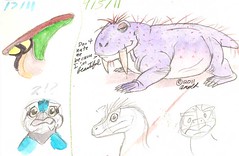
As stated in part one (hit "Older Post"), The Macmillan Illustrated Encyclopedia of DINOSAURS and Prehistoric Animals set out to illustrate every fossil vertebrate yet known circa the late '80s. What it doesn't do is dedicate much text to the animals included. And some animals need more love.
Take the Pareiasaurs seen above. No, they aren't dinosaurs. They're a group of Permian Anapsids, and as such their only famous relatives are turtles and tortoises. (This may give some of you non-nature-geeks a headache but turtles, as it turns out, might not be closely related to any other modern reptiles. Should be noted that Class Reptilia might as well be retitled, "Animals Charles Linneus Did Not Like".) The Encyclopedia gives no information about these animals other than basically, "They were big herbivores with four legs and they had big bumps on their heads." Yeah. Could never have guessed that.
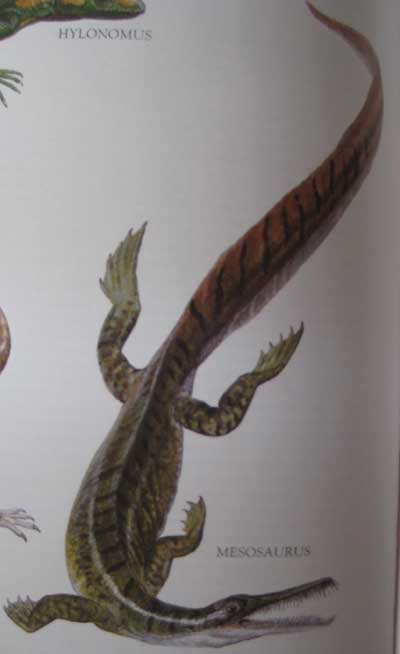
We've got a very wide variety of animals to see today so let's stay in Anapsida for now. This is a Mesosaur, and I really like him. Look how cute he is. I have a soft spot for water animals and Meso here is stated to be the first land animal who "returned to the sea". In fact, I think Mesosaurus has the most text of any animal we've looked at in this book! Nothing particularly interesting; he was long-bodied but small (about three feet long) and probably lived like an otter.
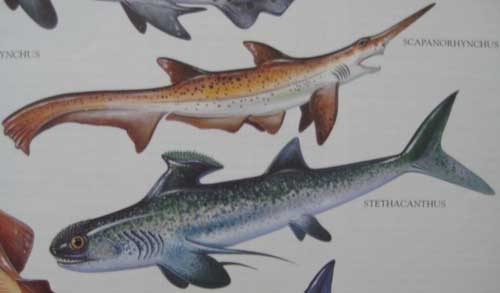
From cute aquatic reptiles, I take you now to weird fish. These are two Elasmobranch fish, and fellow frequent "Science... Sort Of" listeners probably already know that this is the big clade to which sharks and rays belong. Scapanorhynchus is a shark from the Cretaceous period and probably lived like modern Goblin Sharks. Stethacnthus is a much, much older fish from the Devonian, and that thing on his fin was some kind of threat display.
The book demonstrates very vividly that the shark is the grand jury prize winner in the grand game of evolution. Single genres of shark (like the famous Hybodus, which looks rather like a bigger Spiny Dogfish) last for more geological periods than whole orders of four-legged animals do!
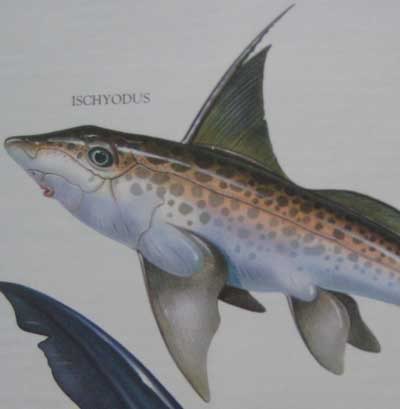
Ischyodus is a member of the other group of cartilaginous fish, the Chimaeras. Just have to point out one thing: this fish has some creepy lips.
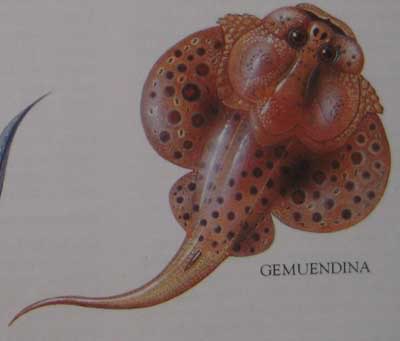
Our last fish is from the extinct fish group, the Placoderms, or "Armorsharks" thanks to their armored skin and the fact that their most famous member, Dunkleosteus, was nightmare fuel on fins. This Placoderm is Gemeuendina, a bottom-dweller remarkably similar to modern rays and flounders, and that FACE!?! (See also...)
And with that, we move on to amphibians. Amphibians are cute, right? Right?

OK, seriously. This is Gerrothorax, and it was a big, flat, gill-retaining amphibian whose relatives either all died out in the Jurassic or gave rise to today's frogs and toads.
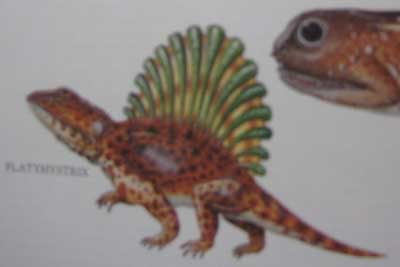
Platyhystrix is another member of this clade and it was a contemporary of more famous Synapsid sail-havers like Dimetrodon and Edaphosaurus. Unlike those animals, Platyhytrix's sail is apparently a really weird kind of armor. And speaking of weird armor...

Diplocaulus! You may recognize this creature. They were in an episode of "Dink the Little Dinosaur" once. Let us not speak of it again.
I know you're impatient, so let's show a few dinosaurs before next post...
Or not, because it is 1988 and birds is birds. See, this book says so:

Yeah. Like the primates, the birds suffer from an unfortunate change in art styles too:
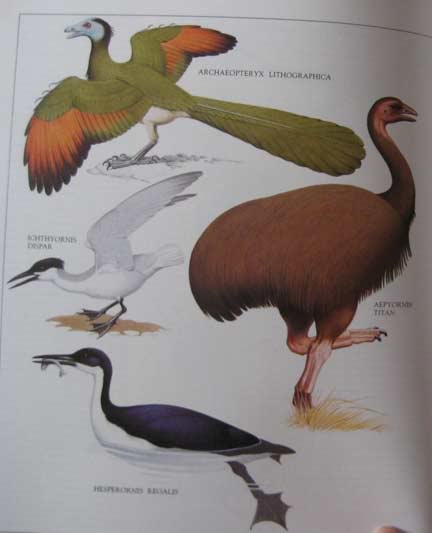
What you're looking at here is essentially the be-all and end-all of prehistoric avian diversity, circa the 1980's. Something like little Sinosauropteryx would have totally broken everyone's mind back then.

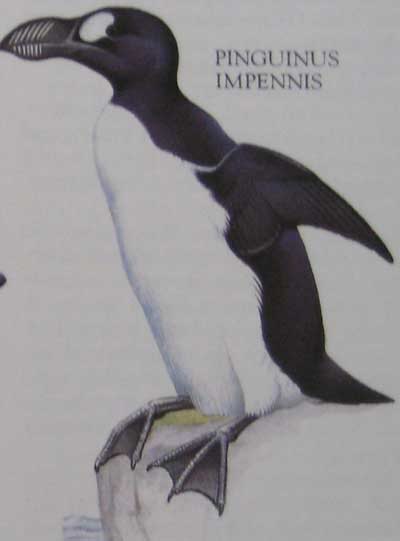
And in case you woke up happy this morning, here's today's reminder that Humans Are Bastards. Which is surely the only reason why the Great Auk and Dodo are included as neither of them are, strictly speaking, prehistoric.
Addendum: And in case you are still having a good time after that, here's a recent article about the Dodo that pretty much tells you everything you need to know about people's attitudes towards animals back then.On to Part Three: 80's Dinosaurs!
----
It seems James Gurney was in Boston very recently. He visited Club Passim and The Harvard Museum of Comparative Zoology. The HMCZ is probably my single favorite place to sketch so It's awesome to see it get Gurney's approval.
Also, this happened.

----
Sketch of the Day!
